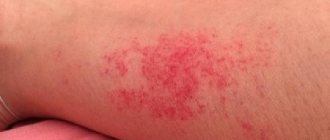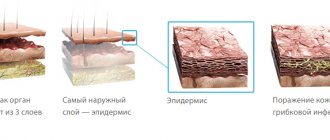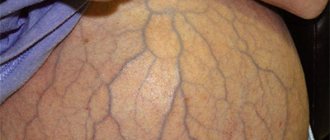Red whites of the eyes are a sign of vasodilatation or hemorrhage. It may be temporary and go away on its own. Or it can become a constant problem, accompanied by unpleasant sensations. It festers, itches, waters, hurts, and swells.
People do not take the causes of illness seriously. They find trivial excuses for the problem. And the redness of the protein, meanwhile, manifests itself in the form of thickened, enlarged blood vessels.
What to do - cope with the disease yourself or immediately go to a specialist. Let's figure it out: why the malaise occurs, why the eyes turn red, how to eliminate the consequences.
Symptoms
The clinical picture depends on the cause that caused this condition. If there is only redness and it goes away after a few days, there is nothing to worry about. Emergency help is required if the following signs accompany hyperemia:
- headache or eye pain;
- disturbance of visual perception;
- yellow or green discharge;
- formation of ulcers;
- the presence of crusts on the eyelashes.
Redness may be the cause of a penetrating injury. In this case, hemorrhage may occur and immediate assistance is required.
For a cold
Redness of the eyes during a cold is most often caused by hypothermia. The response of the immune system is reduced, so ARVI in autumn and winter is accompanied by severe pain in the head and pain in the eyes.
Eye pain during illness is normal. Proper treatment requires obtaining accurate descriptive characteristics of the condition.
The probable causes of deterioration in health are:
- hypothermia of the body;
- exposure to strong winds and frost;
- adenoviral infection;
- bacterial conjunctivitis.
Most often, unpleasant sensations in the eyes are observed during severe damage to the immune system, influenza. Symptoms such as severe weakness, high fever, nausea, and headache are also typical. The eye loses the ability to adequately perceive light.
If you have a cold in your eye, you need to act quickly by starting treatment immediately.
Medicines that can be used:
- antiseptic gels, drops: Vitabact, Tobradex, Albucid;
- antifungal drugs;
- intravenous antibiotics;
- analgesics;
- ointments containing hormones: Hydrocortisone.
If the diagnosis is accurate and the cause of the disease is correctly identified, the effect of treatment will be positive. Medicines are prescribed only by a doctor; self-medication will worsen the situation.
Causes
Foreign body
The cornea can be scratched by contact with dust, dirt, sand, shavings, metal particles, contact lenses, or even the edge of a sheet of paper. Corneal abrasions caused by a plant substance (such as a pine needle) usually require special attention because they can cause inflammation inside the eye (iritis).
Overexertion and fatigue
This reason is especially common among those who are forced to spend a long time at the computer or work with documents, or drive a car for a long time. Along with redness, soreness and dryness occur.
Improper use of contact lenses
Before inserting or removing contact lenses, wash and dry your hands thoroughly. If a person uses long-term wear lenses, a cleaning and storage regimen will be required. The thinner the lens, the more oxygen reaches the visual organs. If oxygen supply is limited, this may cause redness.
This symptom appears if the optical product has been damaged. Scratches and cracks on the eye are a direct path to infection and hyperemia of the eye.
Alcohol abuse
Alcohol causes blood vessels to dilate. If you abuse alcoholic beverages, they cannot withstand such stress and begin to burst. Hence the small hemorrhages in the eyes.
Air conditioner
Prolonged stay in a room with dry air also leads to hyperemia. Air conditioners cause dry eye syndrome.
Allergic reaction
It develops when the body's defense system reacts to a foreign substance - pet dander or food - that does not cause a reaction in most people.
An allergy begins when the immune system mistakes a normally harmless substance for a dangerous invader. Produces antibodies for that specific allergen. When a person is exposed to the allergen again, these antibodies can release histamine.
Symptoms depend on the substance and may affect the respiratory tract, sinuses and nasal passages, skin and gastrointestinal tract.
Common reasons:
- certain foods, such as peanuts, tree nuts, wheat, soybeans, fish, shellfish, eggs and milk;
- insect bites, such as from a bee or wasp;
- medications, especially penicillin or penicillin-based antibiotics;
- latex.
Clinic:
- sneeze;
- itching in the nose;
- runny nose;
- nasal congestion;
- tear-filled, red and swollen eyes.
Food allergies cause tingling in the mouth, hives, and anaphylaxis.
Dry eye syndrome
Red eye syndrome occurs when there is severe dryness. Tears do not provide normal lubrication, the eye dries out, and the following symptoms appear:
- sensitivity to light;
- burning;
- lacrimation;
- blurred vision and fatigue.
Causes of dry eye syndrome include aging, wind, smoke or dry air, an imbalance in the composition of tears, laser surgery, and damage to the tear gland from inflammation or radiation.
Conjunctivitis
One of the main probable reasons. Conjunctivitis is a condition where the conjunctiva becomes swollen and irritated. The conjunctiva is a thin, transparent membrane that covers the outside of the eye and the inside of the eyelids.
This is a contagious condition, so you should follow certain hygiene rules and adhere to the treatment tactics agreed with your ophthalmologist.
Arterial hypertension
Hypertension is one of the diseases that can affect the condition of the retina of the visual analyzer. Pinpoint hemorrhages are detected with angiopathy, which is characteristic of the first stage of arterial hypertension.
Along with hyperemia in grade 2 angiopathy, the following signs appear:
- pain;
- itching;
- spots before the eyes;
- dark spots.
The serious condition is accompanied by nasal and ear hemorrhages, blood in the urine.
Diabetes
Complications of diabetes mellitus are the most serious medical, social and economic problems of timely healthcare. It is necessary to contact an ophthalmologist if you notice blurred vision, redness and deterioration of vision in general.
Diabetic microvascular damage occurs throughout the body. Microangiopathy affects the vessels of the retina, peripheral nerves and brain. Redness may turn into hemorrhage if the patient does not control diabetes mellitus,
Glaucoma
With glaucoma, the eyes don't just turn red, they take on a faint bluish tint. Because of the red vessels, the network of dilated vessels is clearly visible against the background of the protein membrane.
Hyperemia occurs due to increased intraocular pressure, which leads to vasodilation.
Blepharitis
Inflammation of the edges of the eyelids develops due to polluted air and chemical gases. People suffering from diseases of the digestive system, imbalance of thyroid hormones and immune system disorders are susceptible to the development of blepharitis.
It manifests itself as plaque on the eyelashes, blockage of the meibomian glands and redness of the eyelid and mucous membrane of the organs of vision.
Keratitis
Always red eyes with keratitis. This is an inflammation of the outer layer of the eye, manifested by pain and cloudiness. Keratitis is characterized by ulceration.
Episcleritis
Inflammatory pathology that affects the episcleral tissue located between the connective and scleral membranes is characterized by local and diffuse redness. Redness of the vessels of the eyeball occurs around the nodules.
Episcleritis does not progress to scleritis. Redness depends on the degree of inflammation. Prolonged attacks occur among people with systemic illnesses.
The structure of the mucous membrane of the eye and membranes of the eye
The vitreous body occupies most of the space inside the visual organ. In addition to it, there are 3 shells, 2 chambers and a lens. Thanks to the eye membranes, the internal structures are maintained in the correct shape. These tissues supply nutrients to the organ. The outer shell is the most extensive - it covers more than 5/6 of the entire area. The fibrous membrane consists of 1/6 of transparent cells, the rest is sclera.
Conjunctiva
The conjunctiva is the outer mucous membrane lining the inner surface of the eyelids and the apple of the eye, the outer covering. A thin mucous membrane covers the back of the eyelids and connects to the cartilage. It forms both main (lower and upper) conjunctival fornix. They provide free movement of the eyeball, the upper one is 2 times larger than the lower one.
The conjunctiva performs secretory and protective functions. Inside the shell there are many glands that produce mucin and are involved in the production of tear fluid, which is responsible for protecting and moisturizing the eye.
Cornea
There are no small vessels inside the cornea. The ocular cornea is the transparent part of the outer shell that has the limbus (the area where the iris connects to the sclera). The cornea is thin - less than 0.9 mm. The shape of the cornea resembles a lens. It is sensitive, has a large number of nerve endings and can transmit and refract light rays. There are 5 layers inside the cornea:
- anterior and posterior epithelium;
- endothelium;
- Descemet's membrane;
- Bowman's membrane;
- stroma.
The iris also performs protective functions.
Iris
The iris is located between the cornea and the lens. This is a small diaphragm with a hole in the center. The color of the membrane determines the color of a person's eyes - it depends on the number of adjacent cells that produce melanin. These cells are located within the stromal substance. Eye color is inherited, with brown being considered dominant.
The iris consists of 3 layers - anterior, middle and posterior. There are 2 main parts of the iris:
- pupillary;
- ciliary.
Inside it there are vessels, grooves, mesenteries and crypts (lacunae), vaguely reminiscent of a wheel with spokes. Muscle fibers are present, with their help the size of the pupil is regulated. Most often, children are born with gray or blue irises. With age, eye color may change.
Lens
The clear lens is located in the eyeball, directly opposite the pupil. This is a biological lens responsible for light refraction. A biconvex, round, elastic body is attached to the ciliary formation. The back of the lens is adjacent to the vitreous body. In front of it there are 2 cameras (posterior and anterior) and the iris.
Ciliary body
The ciliary, or ciliary, body consists almost entirely of muscle tissue and blood vessels that can change the shape of the lens. This is necessary for accommodation. Structure of the ciliary body:
- mesoderamelic - consists of muscle and connective tissue;
- neuroectodermal - consists of the retina and epithelium.
The ciliary body is involved in the production of intraocular fluid and ensures stable intraocular pressure.
Vitreous body
The vitreous is a jelly-like substance that fills the cavity behind the lens. There are many channels inside it, it is covered with a membrane. An artery passes through the vitreous body, providing normal nutrition to the lens. The vitreous body consists of 3 parts:
- the organ itself;
- protective membrane (front);
- a channel through which a blood vessel passes.
Inside the vitreous body there are fibrils and collagen, and between them there is hyaluronic acid.
The choroid proper of the eye
The choroid, or choroid, is located between the retina and the sclera. Blood vessels intertwined with each other form the Zinn-Galera ring. Large blood vessels (veins and arteries) pass along the outer surface, and capillaries are located inside.
The choroid is responsible for nourishing the retina and is involved in removing waste products from the eyeball.
Between the choroid and the retina is Bruch's membrane, which ensures the movement of certain substances in one direction.
Retina
The retina is the inner membrane lining the cavity of the eyeball. It consists of 3 layers - pigment epithelium, light-sensitive cells and limiting membrane. The retina is involved in metabolic processes within the organ and is responsible for visual acuity.
Optic nerve
The optic nerve is located inside a bone formation and is surrounded on all sides by adipose tissue. The optic nerve consists of 4 parts:
- intraocular;
- orbital;
- tubular;
- cranial
The orbital and intraocular parts are dotted with small blood vessels. The main function of the optic nerve is a reflex reaction to a stimulus.
Lacrimal apparatus
The lacrimal apparatus consists of 2 parts: the lacrimal ducts and the lacrimal gland. The latter is located at the top of the orbit. There are several lacrimal ducts - the fluid first enters the lacrimal lake, then into the lacrimal sac. At the end of the process it is removed from the nasolacrimal duct.
Treatment
Treatment for a reddened organ of vision depends on the cause that caused it. If a foreign body gets in, you should seek medical help if you cannot remove it yourself. First aid:
- Rinse eyes with clean water or saline solution.
- Blink a few times. This will help remove small particles.
- Pull the upper eyelid and place it on top of the lower one. This may cause watering of the eyes, which may help flush away the foreign body.
To avoid worsening, do not rub your eyes or touch them with a cotton swab or tweezers. During healing, stop using contact lenses. Most corneal abrasions heal in 1 to 2 days.
If the cause is contact lenses, remove them, check for integrity, clean mechanically and keep in solution. If necessary, replace with new ones.
The redness will go away on its own if the underlying disease is treated. This applies to dry eye syndrome (antibiotics, anti-inflammatory drugs and tear stimulants are prescribed), allergic reactions (sometimes it is necessary to use drops), conjunctivitis, blepharitis, iritis, glaucoma, diabetes mellitus.
For these diseases, complex therapy is prescribed, which includes eye drops to relieve hyperemia. Severe and constant redness cannot be treated on your own, this is not the norm, it indicates a disease.
If scleral hyperemia is not associated with serious diseases, you can normalize the appearance on your own. For example:
- use tea bags for fatigue and overstrain;
- apply grated raw potatoes for 20 minutes;
- cut cool cucumber into circles and apply to closed eyelids;
- wash your eyes with chamomile infusion.
If the eyeball becomes red after drinking alcohol, apply ice. Exposure to cold temperatures stops the bleeding of burst vessels.
Redness of the eyeball
In normal condition, the vessels in the eyeball are practically invisible. When the body malfunctions, they expand and become clearly visible. People around you start saying that the squirrel is red.
In some cases, redness of the eyes is accompanied by additional symptoms: discharge from the eyes, dryness, cutting pain, and decreased visual acuity.
The main sign of the disorder is dilated blood vessels. The reasons are different in origin.
In addition to redness, the described condition has other symptoms:
- discomfort when blinking;
- a burning sensation in the eyes;
- burning or itching;
- increased lacrimation;
- discharge from the eyes;
- pain in the forehead and bridge of the nose.
You want to cover your reddened eyes and rub them. Sometimes there is a desire to apply a disc moistened with cold water to eliminate discomfort. This is not recommended, because any mechanical irritation or friction worsens the situation.
Complications
If the underlying condition is not treated, the redness will get worse. The pathology itself will lead to serious consequences. Complications:
- For allergies - anaphylaxis, asthma, sinusitis and ear or lung infections.
- With dry eye syndrome - infection, damage to the surface of the eye, decreased quality of life due to difficulty performing daily activities.
- With glaucoma - tubular vision, blind spots in peripheral vision, complete blindness.
- With diabetes mellitus - complete blindness, partial loss of visual perception.
- With conjunctivitis, spots appear on the cornea, which can cause decreased vision. Sometimes leads to hemorrhage.
Why the whites of the eyes turn red: inflammatory processes
Often the eyes turn red due to the appearance of inflammatory processes caused by various infections and diseases. One of the most common causes is conjunctivitis (inflammation of the conjunctiva and the membrane that covers the eyelids). It can be caused by allergies, various bacteria or viruses. In this case, the ophthalmologist prescribes treatment individually. The patient also needs to strictly follow the rules of hygiene: wash your hands as often as possible, use personal hygiene items and not touch your eyes so as not to provoke the spread of infection.
The reason that the eye turns red can be blepharitis (inflammation of the eyelash follicles). This disease can be ulcerative, allergic or seborrheic, so it is important to be examined by a doctor and select the required course of treatment. In addition, redness of the white of the eye is often associated with inflammation of the choroid, various diseases of the cornea and autoimmune diseases.
Inflammatory causes of eye redness:
- Inflammation of the conjunctiva (conjunctivitis - allergic, bacterial, viral).
- Inflammation of the eyelash follicles (blepharitis).
- Inflammatory damage to the choroid of the eye (uveitis).
- Corneal ulcers of different origins.
Prevention
Preventing allergic reactions depends on the type of disease. There are general rules that are recommended to be followed:
- Avoid known irritants. Even if the patient is already undergoing treatment, try to avoid allergens. If you have a pollen allergy, for example, stay inside with windows and doors closed. If you are allergic to dust mites, clean your apartment more often and maintain an optimal level of humidity.
- Keep a diary. This will help determine which source is the allergen that caused the redness of the eye. This can help your doctor identify the allergen.
- Wear a medical bracelet. If there has been a severe allergic reaction, the medical bracelet lets others know that the person has a severe allergy and may experience anaphylaxis. Doctors will quickly take action.
For dry eye syndrome, prevention consists of avoiding air getting into the eyes, additional humidification of the air, and placing the screen at eye level.
If you have diabetes, you can prevent complications that affect your eyes. You should visit your ophthalmologist more often, eat a healthy diet, monitor your blood pressure, and do recommended exercises.
Glaucoma
Harmless redness of the eyes can be a symptom of glaucoma, a disorder caused by increased intraocular pressure. This disease often threatens deterioration or complete loss of vision. It is important to remember that an acute attack of glaucoma (usually accompanied by nausea, vomiting, decreased heart rate, photophobia) requires emergency medical care to urgently reduce intraocular pressure with the help of medications. In some cases, glaucoma develops slowly, manifesting itself through redness, the appearance of rainbow circles in front of the eyes, deterioration of peripheral vision (a person has difficulty seeing objects located to the side), and the appearance of dark spots in front of the eyes, therefore, if the above symptoms appear, it is necessary to visit an ophthalmologist in time and undergo an examination.
Video from YouTube on the topic of the article:
Inflammation of the tear duct
Localization: palpebral part of the lacrimal gland. Stagnation and blockage of tear outflow appears in narrow areas of the tear duct. With prolonged stagnation, infection appears.
Symptoms of pathology
The clinical picture of dacryocystitis appears immediately. Usually the pathological process is localized only in one eye.
Symptoms:
- lacrimation;
- conjunctival hyperemia;
- increased body temperature;
- enlargement of the submandibular lymph nodes;
- blurred vision;
- lacrimation in the cold;
- pain when trying to touch the eye;
- discharge of liquid of unknown consistency.
Dacryocystitis is characterized by signs of intoxication, especially with a bilateral inflammatory process. As the disease progresses, the swelling increases and the tissues soften. Possible abscess formation. It opens and pus flows out.
After opening, hyperemia decreases, fistula formation and chronicity are possible.
Methods of treating the disease
The therapeutic approach depends on the form, age of the patient and etiology of the disease. Dacryocystitis in an adult patient is treated with drops and ointments to prevent the spread of infection. Rinsing with disinfectants is prescribed.
Antibiotics are prescribed, for example Floxal or Dexamethasone. Additionally, medications are prescribed to narrow blood vessels.
In difficult cases, surgical intervention is required. Bougienage or dacryocystomy is performed.
Inflammation of the cornea
The cornea is a transparent spherical membrane. Light passes through it into the eyes, and the acuity of visual perception also depends on it. Inflammation of the cornea is called keratitis. It is divided into central, peripheral and paracentral types depending on the location of the pathological process.
With central keratitis, the infiltrate accumulates in the area of the pupil, with peripheral keratitis - in the limbus, with paracentral - in the iris zone.
The pathology is manifested by a sensation of a foreign body, redness, deterioration of visual function, clouding of the cornea, decreased sensitivity and deformation. With keratitis, there is no specularity or shine on the anterior surface, this indicates ulceration in the area of infiltration.
If therapy is not carried out in a timely manner, the inflammatory process spreads to the iris, ciliary body and white membrane.
Long-term therapy of the disease leads to the formation of a through defect in the cornea, complicated lens opacification, endophthalmitis and optic neuritis.
Features of treatment depend on the etiology of the disease. For infectious types of disease, antiviral drugs, antibiotics and antifungal drugs are used.
In the case of viral nature of keratitis, antiviral medications are prescribed. These are Interferon, Acyclovir, Deoxyribonuclease. Ointments are prescribed for local treatment; they will help avoid secondary infection.
Laser coagulation, electrophoresis, and cryoapplication are also used for the treatment of keratitis. In rare cases, surgical intervention is resorted to.
Inflammation of the eyelids
The disease is called blepharitis. Most often it is infectious in nature. The inflammatory process begins with the slightest lack of sleep, intestinal problems, dental problems, and colds.
The process is localized on the ciliary edge, meibomian glands, and corners of the eyes. Depending on this, there are three forms of blepharitis:
- front;
- rear;
- angular.
The symptoms of all forms of the disease are similar. Blepharitis is manifested by redness and swelling of the area where the inflammation began. The roots of the eyelashes are covered with dirty yellow scales.
Signs of pathology:
- secretion of a clear, oily secretion;
- redness of the eyelid;
- itching;
- after removing the crust, purulent bleeding ulcers open;
- deformation of the eyelid after healing of ulcers.
Treatment of blepharitis is based on antibacterial medications and antiseptics. Medicines are selected to destroy a fungal or viral infection. Additionally, a massage of the eyelid is performed, it improves metabolic processes.
Folk remedies are used in the treatment of blepharitis. Celandine, coconut oil, raw potatoes and cottage cheese are used for lotions. Traditional treatment methods help fight redness, itching and other signs of blepharitis.
In the chronic course of the disease, therapy is supplemented with measures aimed at enhancing the immune system.
Treatment measures at home
Occasionally, it happens that a completely healthy person begins to notice that with ARVI, he begins to have problems with his vision. The same applies to isolated cases of deterioration of health after alcohol or from the sun. The rest of the time they have a normal appearance.
In this situation, after consultation with an ophthalmologist, treatment at home is allowed. But if, during the process of providing assistance, rashes appear on the cheekbones, diarrhea, or other strange conditions appear, then it is necessary to urgently contact the clinic again.
When you just need to put yourself in order after crying, alcohol intoxication, overwork, or prevent infection, then even self-prepared compresses will do. They are made from a decoction of medicinal herbs with a calming effect that can relieve the feeling as if sand had entered. They are combined with the application of ice.
A properly selected diet, which should include only healthy foods containing large amounts of vitamins C, has a strong effect on vision health.
Additional help will be the consumption of products that save you from visual fatigue:
- eggs;
- carrots;
- cabbage;
- fish;
- berries;
- parsley
When it stings significantly without any external provocateurs, and tests have not revealed anything unnatural, then ophthalmologists suggest leaning on nuts and seeds. They are rich in useful substances that have a good effect on visual acuity.
When it is especially difficult to monitor the quality of the diet, and the liver gives distress signals along with the eyes, doctors prescribe special pharmaceutical complex vitamin and mineral preparations. They will help you recover from lack of sleep due to the presence of lutein.
When vasodilation is associated with overwork, special drops can be used to neutralize the seemingly unattractive effect. But it is worth remembering that they work on the principle of ointments for bruises and contusions. This means that they only have the power to stop the external manifestation, without preventing the overstrain itself. The latter lies entirely within the responsibilities of the patient, who no longer wants to put up with unaesthetic swelling.
Their principle includes an effect on dilated pupils or constriction of blood vessels. The therapy works great as an emergency treatment algorithm, but cannot be used on a regular basis.
Tear-stained eyes can soon be restored with the help of drugs from the “artificial tear” group. They are relatively inexpensive, but this does not mean that everyone is allowed to use them.
They will not replace classical microsurgery techniques, which allow elderly people suffering from uneven quality of vision in the left or right eye to restore their former sharpness. Even for kids who constantly stick their dirty palms in to pull out a fallen eyelash, an “artificial tear” will not bring any significant benefit. It will not become a panacea for osteochondrosis, which is often accompanied by just this side effect.
Their responsibilities include exclusively moisturizing the mucous membranes, which will greatly help against the negative effects of welding. Their main advantage is the ability to moisturize dried mucous membranes after work. In just a couple of minutes, tired eyes will no longer cause discomfort.
An ophthalmologist can tell you which drug to choose between several options. But if it turns out that drops with a moisturizing effect do not help, then perhaps the reason for the unpleasant sensation lies in something else. Then you will have to sign up for a specialized consultation, being prepared to undergo auxiliary testing. Any delay threatens with unpleasant complications.
Despite the fact that medicine rarely records cases of benign or malignant oncological tumors affecting the eyes, or the area around them, this does not exclude the complete absence of risks of such a sad outcome. Because of this, it becomes clear why, if the genesis of the vision pathology is unclear, it is worth immediately checking for the possible occurrence of a tumor.
But for moisturizing the eyes at sea, with sinusitis, lack of sleep, after blepharoplasty and after a bath, this method is quite suitable. Just be prepared for the fact that the body may respond to the product used with an allergic reaction in the form of a rash. Then the drops will need to be replaced, and also wait until the rash goes away.
Slightly damaged membranes will be saved by Sidorenko glasses, accommodation training, and other tools for normalizing blood supply.
Inflammation of the eye socket
There are two types - acute and chronic. Acute include cellulitis and purulent inflammation of the tissues of the orbit, chronic - granulomatosis with polyangiitis, pseudotumor syndrome, Besnier's disease. Localization of the abscess is the internal angle, the middle third of the upper edge, the apex of the orbit.
Cellulite - superior orbital wall. Wegener's granulomatosis - lacrimal gland, extraocular muscles, conjunctiva, sclera, retina.
As a rule, signs appear suddenly. Hyperemia of the eyeball or eyelid occurs. The pain is severe, to the point of incapacitation. Less common are double vision, loss of visual perception, and abnormal protrusion of the eyes from the socket.
Treatment methods for orbital inflammation
The methods depend on the location of the problem. For abscess, semi-synthetic penicillins are used, intramuscular drugs are administered, Erythromycin or Ampiox is taken orally.
Orbital phlegmon is treated with intramuscular antibiotics; in severe cases, medications are administered intravenously. In case of fluctuation, a tissue incision is indicated with penetration into the orbital cavity, and drainage is performed.
Pseudotumor is being treated in a hospital. Therapy includes medications and physical therapy. The operation is performed if necessary. There are several forms of the disease, each treated differently. In acute vasculitis, GCS is prescribed in tablets, which are used for several months.
Idiopathic myositis and dacryoadenitis are treated in the same way. The patient is prescribed:
- glucocorticosteroids;
- non-steroidal anti-inflammatory drugs;
- antihistamines;
- decongestants.
Wegener's granulomatosis is treated with Cyclophosphamide in combination with Prednisone. Initially, the doses are high, then reduced when the disease goes into remission. Patients have to take Methotrexate for a long time (up to two years).
Inflammation of the optic nerve
This disease is called neuritis. Develops when the myelin sheath of nerve fibers is damaged, viral infections and the nervous system. Neuritis occurs due to metastasis to the optic nerve, chemical poisoning and taking certain medications.
Depending on the location, there are 3 types of disease:
- retrobulbar - affects a bundle of neuroconducting fibers outside the eyeball;
- papillitis - develops at the junction of the optic nerve with the retina;
- neuroretinitis - affects the neuroconductive bundle of fibers, the disc and the entire retina.
Signs of neuroretinitis often go unnoticed, so they are detected late and difficult to treat. Optic neuritis is characterized by the following symptoms:
- uneven narrowing of the field of visual perception;
- varicose veins;
- hyperemic disc;
- narrowing of the arteries;
- hemorrhages on the disc.
Neuritis is accompanied by moderate eye pain, which intensifies with movement of the eyeball. Swelling of the surrounding tissues is observed.
Treatment for neuritis consists of steroid hormones. The doctor will prescribe what to put in your eyes to reduce the pathological process. NSAIDs are usually prescribed in drops, ointments or tablets.
The immune system is adjusted; in case of bacterial infection, antibacterial agents are prescribed. In addition, medications that normalize metabolic processes must be prescribed.











